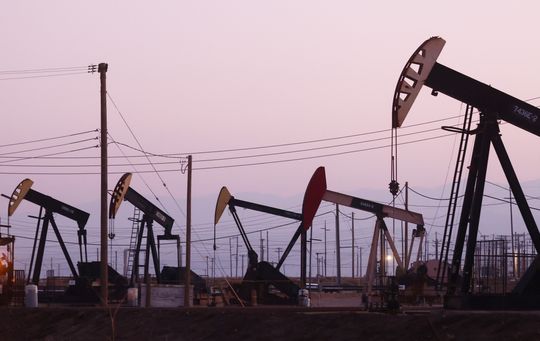Oil futures climbed on Friday to score their strongest weekly gain in over three months, as the market continued recover from fears of demand shocks due to the omicron variant of COVID.
Oil prices marked their biggest weekly gain since August, “despite the ongoing uncertainty revolving around the omicron variant,” said Lukman Otunuga, manager, market analysis at FXTM.
“Even before the omicron menace hijacked the headlines, the outlook for oil was…shaky amid expectations around oil markets returning to oversupply in the coming months,” he told MarketWatch. “With the new virus in town threatening global demand and OPEC+ moving ahead with its planned January oil output rise of 400,000 [barrels per day], oil remains vulnerable to downside losses.”
Still, oil managed to settle above key levels, with the U.S. benchmark above $70 and Brent topping $75 a barrel.
West Texas Intermediate crude for January delivery CLF22, 1.34% CL.1, 1.34% rose 73 cents, or 1%, to settle at $71.67 a barrel on the New York Mercantile Exchange, after shedding 2% a day ago.
February Brent crude BRNG22, 1.17% BRN00, 1.17% added 73 cents, or 1%, to end at $75.15 a barrel on ICE Futures Europe, following a 1.9% decline on Thursday.
For the week, WTI, the U.S. benchmark, was up 8.2%, the sharpest weekly gain since a 10% rise in the period ended Aug. 27, according to Dow Jones Market Data. Brent, the international contract, meanwhile, climbed 7.5%, based on the front-month contract settlement from last Friday, also logging its steepest weekly advance since late August.
The move higher for the week for both WTI and Brent followed six-consecutive weekly losses.
Meanwhile, negotiators are in Vienna this week as Iran holds talks with world powers in an effort to revive the 2015 nuclear deal, The Wall Street Journal reported Friday. Senior U.S. officials have said the Biden administration is moving to tighten enforcement of sanctions against Iran as diplomatic efforts to restore the deal falter, the report said.
In a 2022 energy outlook briefing with media held Thursday, Shin Kim, head of supply and production analytics at S&P Global Platts, said her company’s forecasts on oil assume that Iran and Western powers will reach a nuclear deal in the first quarter, allowing more Iranian oil to return to the market by the end of next year. There’s also likely to be a rising call on oil from the Organization of the Petroleum Exporting Countries in mid-2022, she said.
If no Iran nuclear deal is reached next year, the market will need to use all of OPEC’s spare production capacity to make up for the loss, said Kim. That would leave “little, if any,” spare capacity left for any other events that may disrupt supplies next year.
If there is no deal with Iran and there are supply disruptions, $100 oil becomes a possibility, said Kim.
Over in the U.S., however, the latest rig-count data from Baker Hughes BKR, +2.29% implied a potential output increase, with the number of active U.S. rigs drilling for oil up by four to 471 this week.
Oil prices, overall, have been buffeted by concerns about demand due to the spread of the new omicron variant of COVID since the end of November, with restrictions imposed again on consumer activity in parts of the world including the U.K. this week.
But analysts say that the worst-case scenario for the pathogen may already have been factored into energy supply and demand.
Crude-oil prices appear to be close to recovering nearly half of what was lost during the height of selling on Nov. 26.
On Nymex Friday, January gasoline RBF22, 1.09% tacked on 0.4% to $2.137 a gallon, settling 9.4% higher for the week, while January heating oil HOF22, 0.99% rose nearly 0.1% to $2.252 a gallon, for a weekly rise of 7.3%.
Natural gas for January delivery NGF22, 1.96% settled at $3.925 per million British thermal units, up 2.9% for the session, but posting a weekly loss of 5%.

